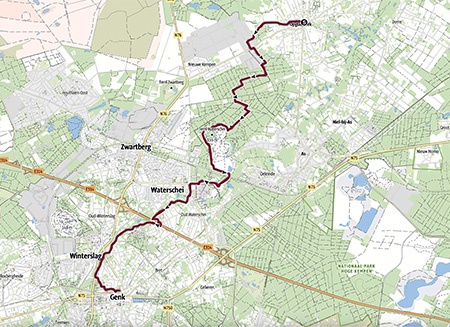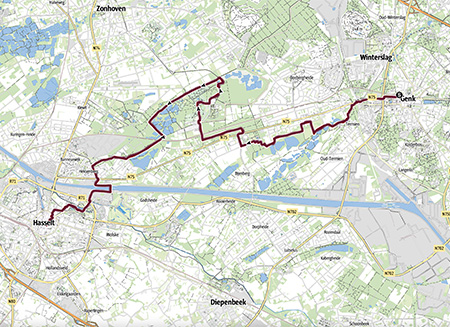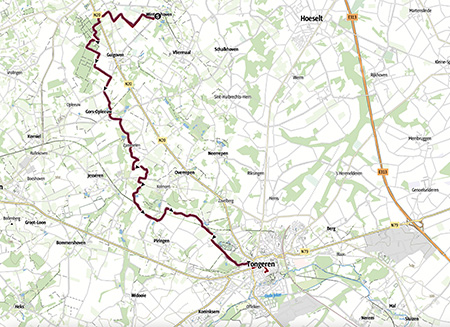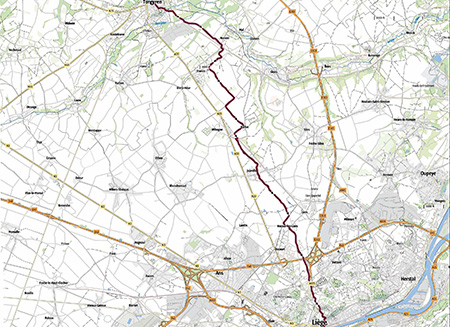First section – from Maastricht to Liège (BE) in 12 stages

First section – from Maastricht (NL) to Liège (BE) in 12 stages
You start in Maastricht (NL) and follow for a while the old Roman “highway” Via Belgica to Rimburg and afterwards you cross Zuid-Limburg to the west and cross the city Sittard. You leave the Netherlands and enter Belgium. Once at Hasselt you turn south to Tongeren and further to Liège.
In section 1. you walk from the capital of Limburg (NL) to the capital of Wallonia (BE). You cross Zuid-Limburg via Meerssen, Spaubeek, and Heerlen. And cross the river Wurm, the open frontier to Übach-Palenberg in Germany. You even walk on parts of the Via Belgica an old Roman path. Once you are in Belgium you walk through to Flanders National Park Hoge Kempen (Candidate for the UNESCO World Heritage). At the end you can visit the Basilica of Our Lady in Tongeren (Candidate for the UNESCO World Heritage) and spend some time in the city Liège.
Overview map and stats:
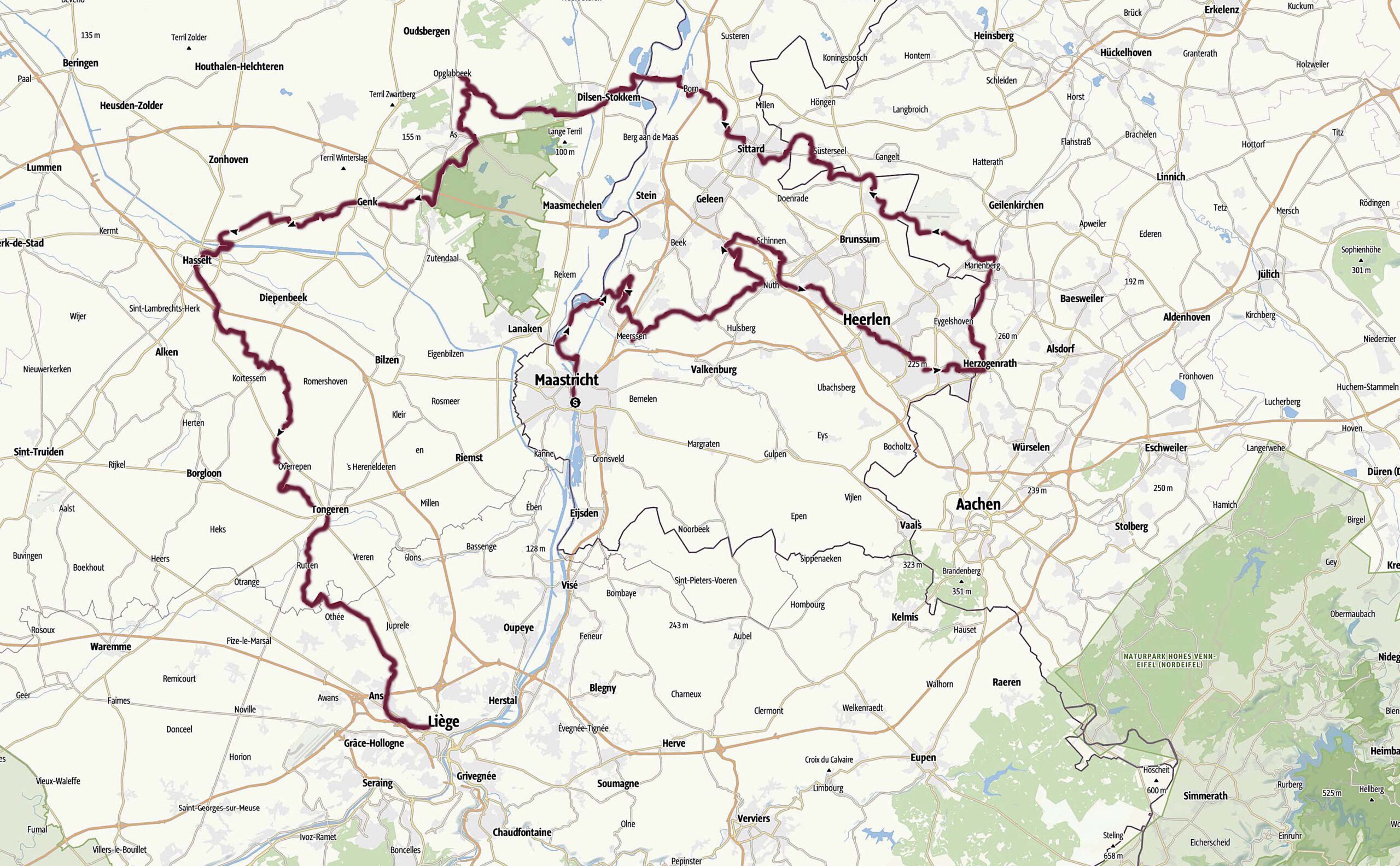
| Number of stages: | 12. |
| Total length: | 250,4 kilometers |
| Shortest stage: | 17,6 kilometers (Wintershoven to Tongeren) |
| Longest stage: | 23,7 kilometers (Spaubeek to Landgraaf) |
| Total ascent: | 1.265 meters |
| Total descent: | 1.225 meters |
| Elevation map of stage 1. till 12.: |

The stages:
Stage 1.
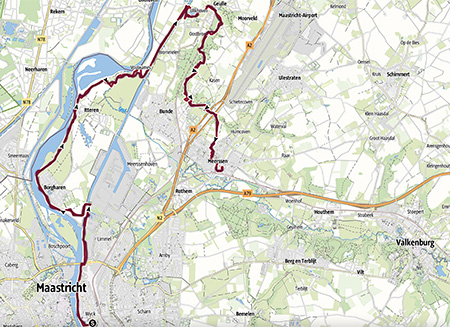
Maastricht to Meerssen
Maastricht is the start of the Modern Grand Tour (MGT) and you follow a part of the Roman trade route Via Belgica.
22,8 kilometers
Stage 4.
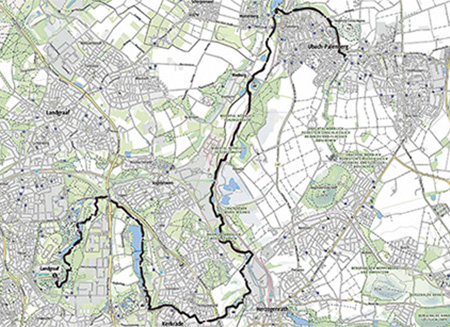
Landgraaf to Übach-Palenberg
Landgraaf is located in the province Limburg and is a young municipality in beautiful surroundings.
21,1 kilometers
Stage 7.
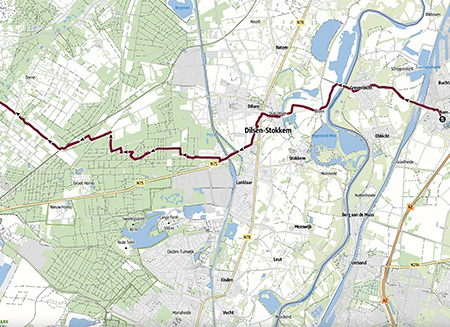
Born to Opglabeek
Born dates from the year 1125. The settlement Born arose on the northeast side of the Graetbos near a water source.
21,2 kilometers
Stage 10.

Hasselt to Wintershoven
Hasselt arose in the 7th century near the Helbeek. The name is probarly derived from Hasaluth, which means hazel forest.



